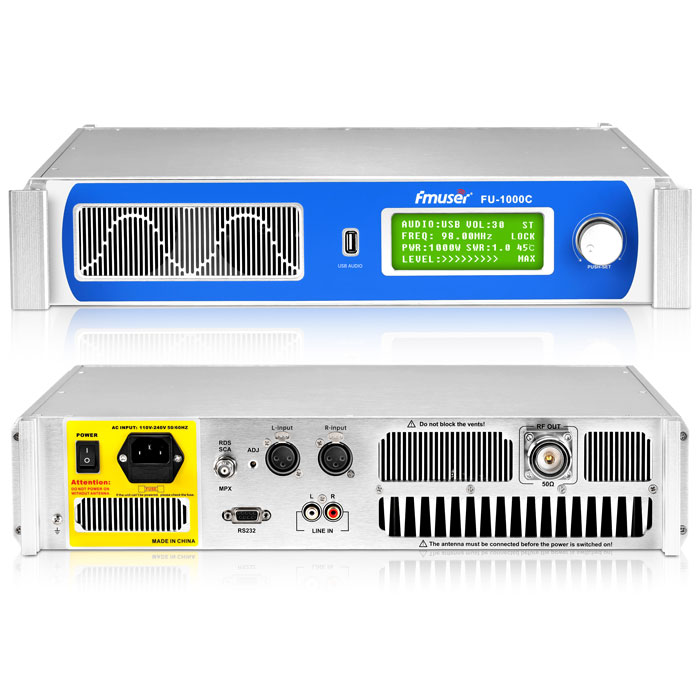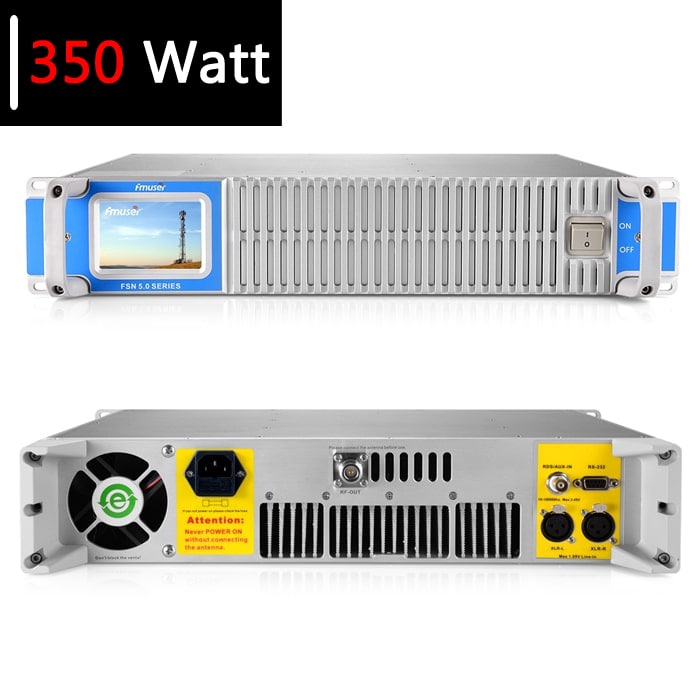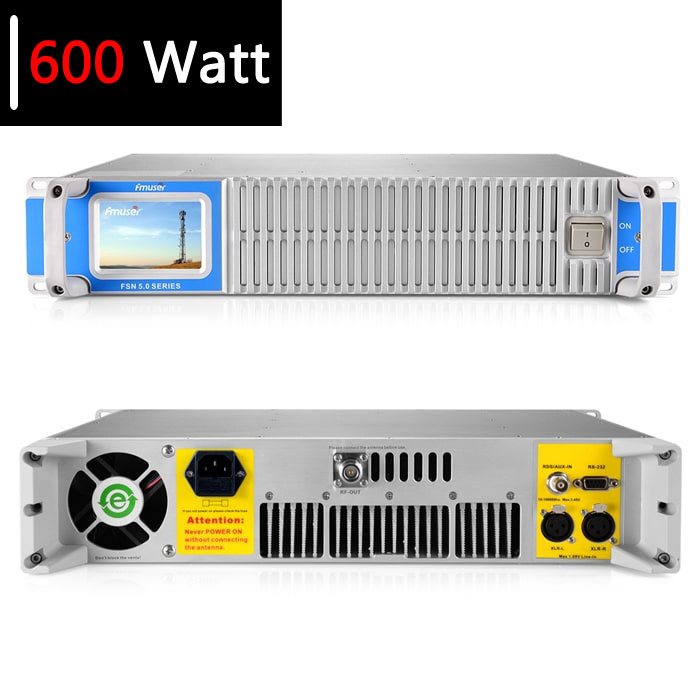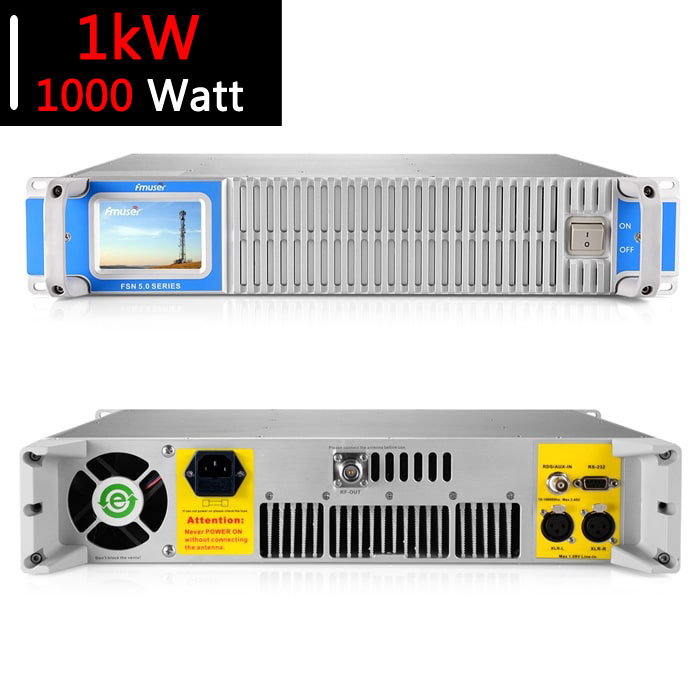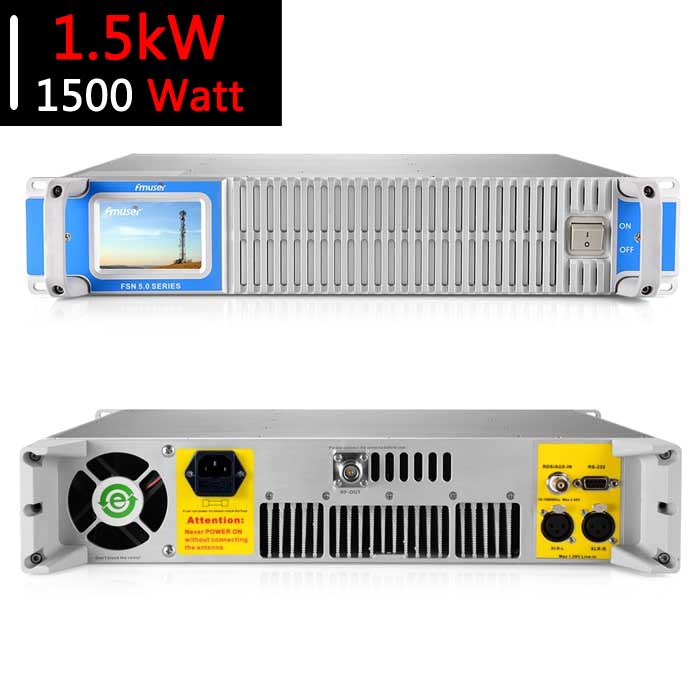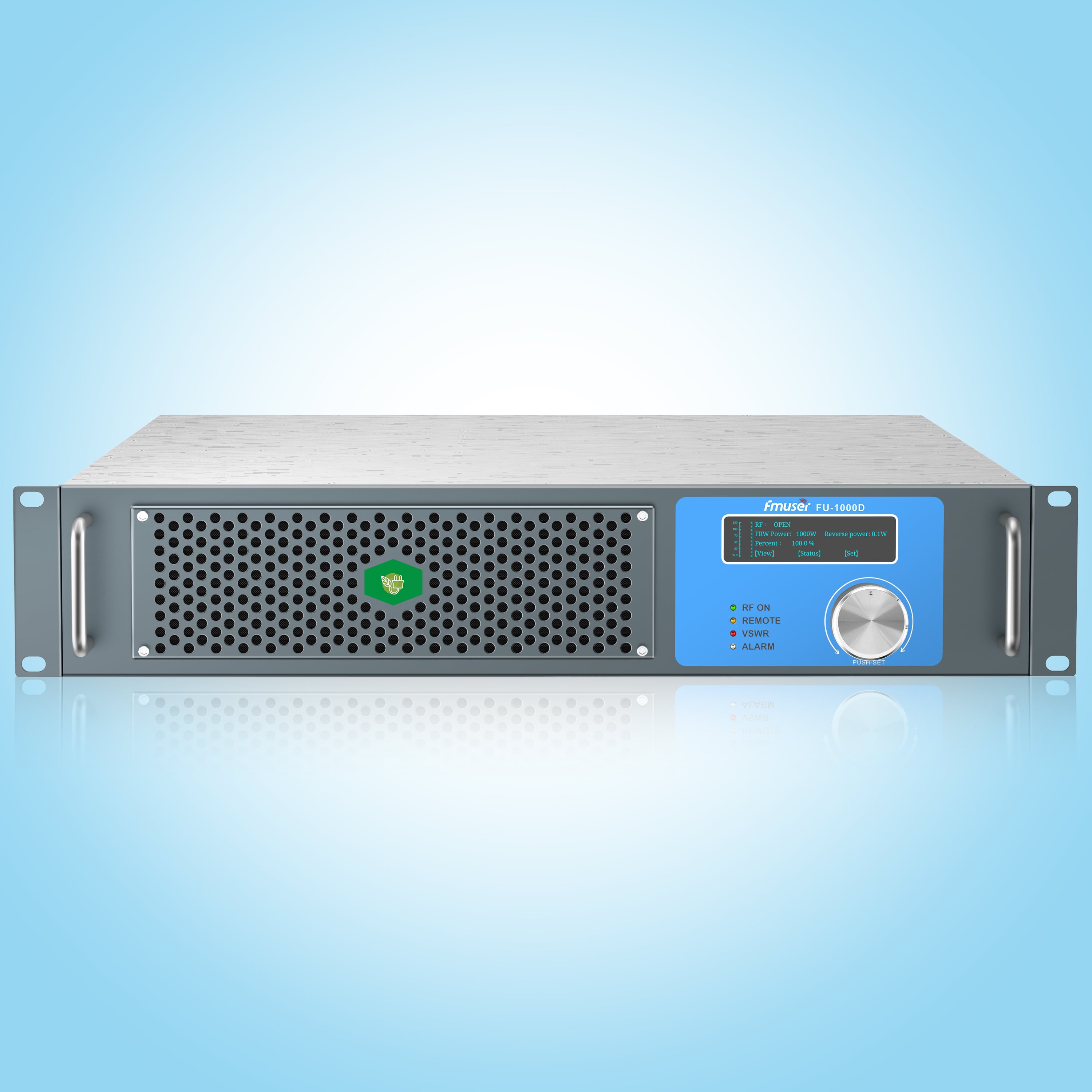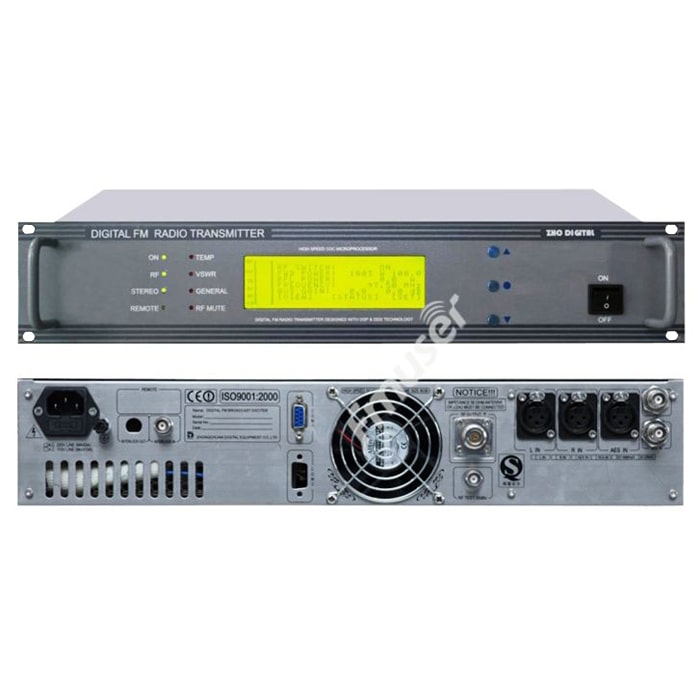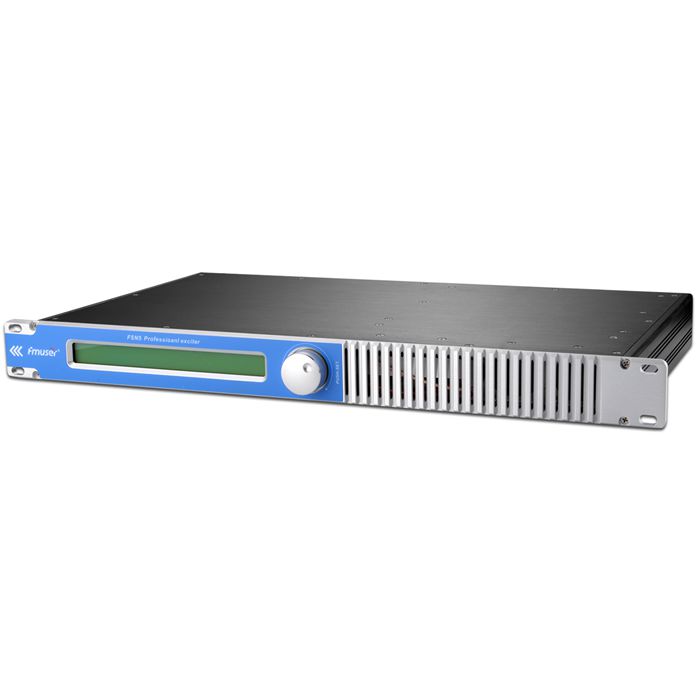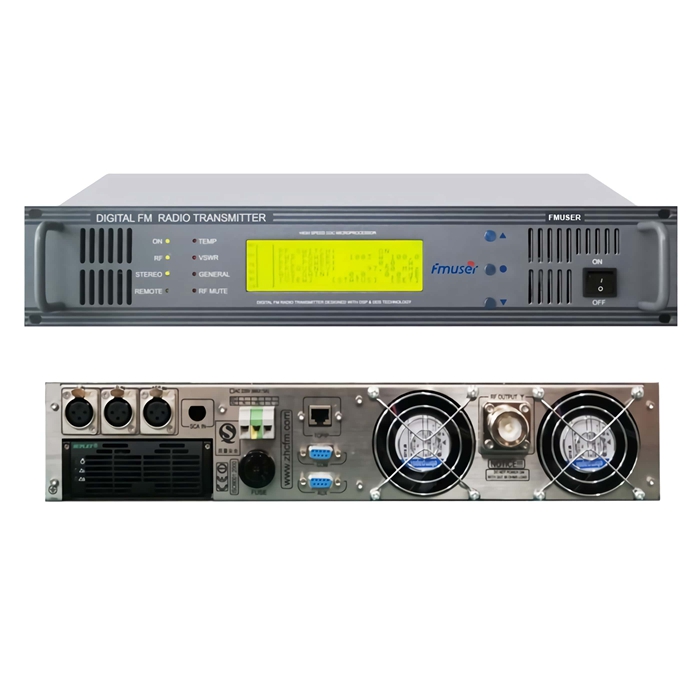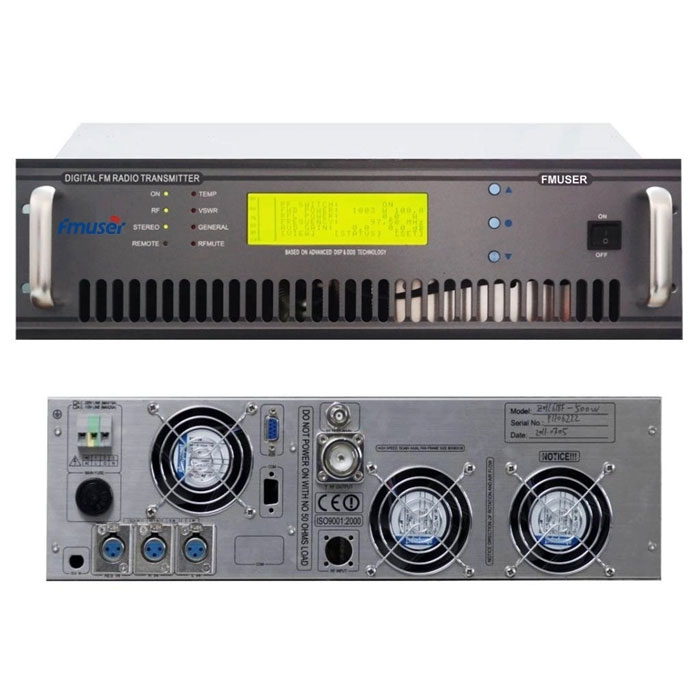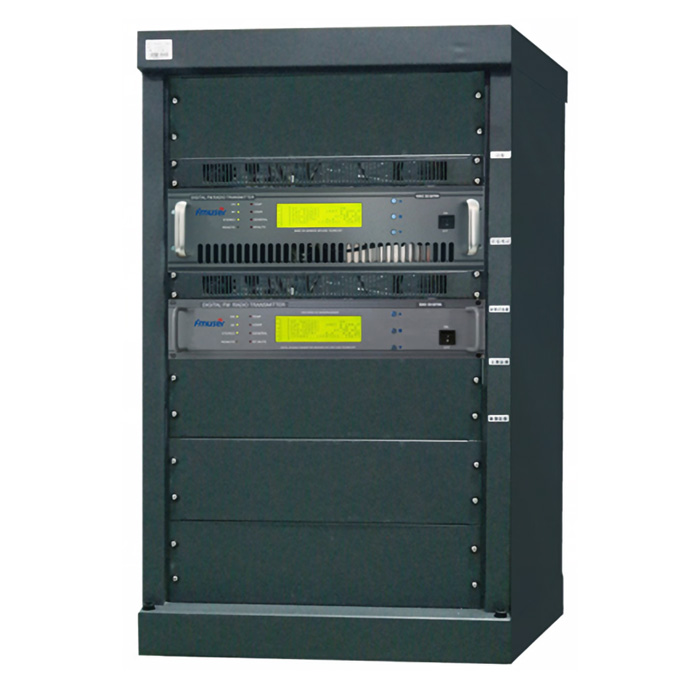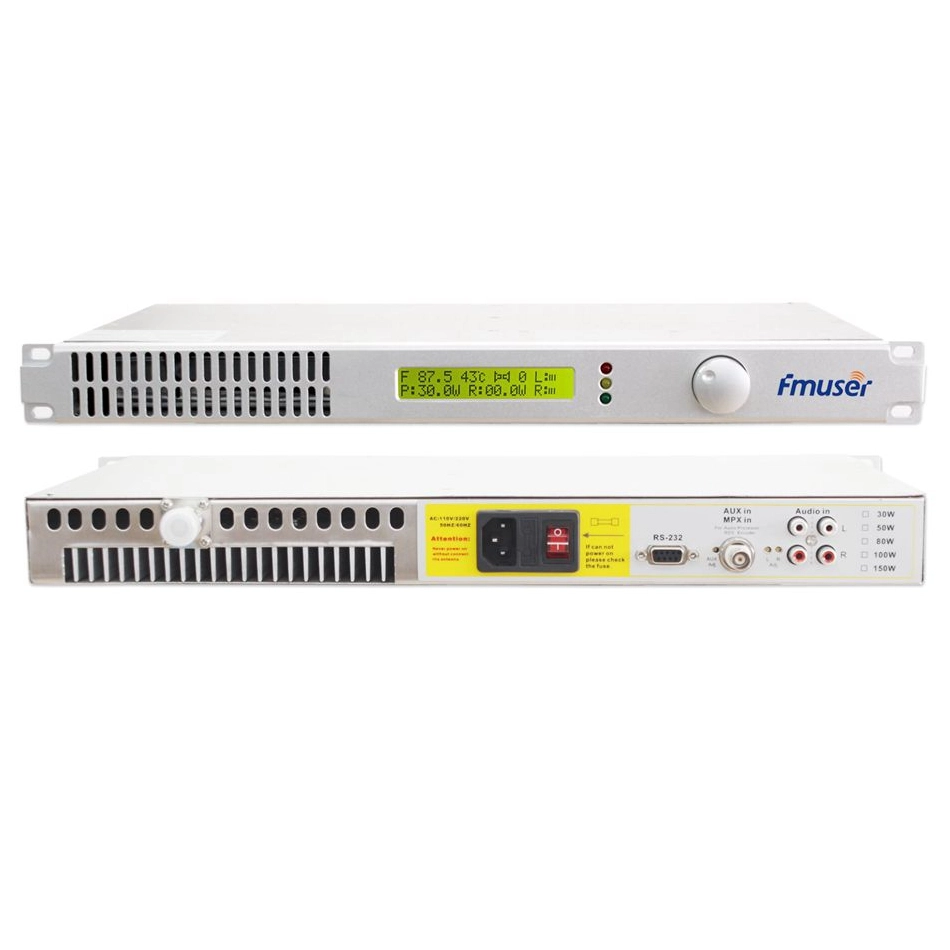
Medium Power FM Transmitter
Medium Power FM Transmitters are pivotal tools for modern radio broadcasting, public announcements, and emergency communication systems.
1. Welcome to Broadcast Excellence!
At FMUSER, we specialize in high-performance, cost-effective RF solutions, engineered to meet the evolving demands of broadcasters, system integrators, and enterprises. This page organizes our Medium Power FM Transmitters (100W to 5kW) by power output, frequency range, and application specificity, enabling professionals to swiftly identify systems ideal for commercial radio stations, campus broadcasting, religious institutions, or municipal networks.
2. Built to Broadcast Better
- Robust Engineering: IP65-rated enclosures, adaptive cooling, and compliance with FCC/CE certifications.
- Cutting-Edge Tech: DSP-driven modulation, stereo/RDS encoding, and remote monitoring via Ethernet/4G.
- Scalability: From compact 300W units for local stations to 5kW industrial systems for wide-area coverage.
- Energy Efficiency: Class-D amplifiers reduce power consumption by 30% vs. traditional models.
- User-Centric Design: Plug-and-play setup for hobbyists; modular expansion for integrators.
3. Powering Every Broadcast Vision
- Community Radio Broadcasting: FMUSER’s transmitters deliver crystal-clear audio for local stations, with customizable frequency bands and stable signal output for uninterrupted 24/7 operation.
- Campus & Educational Networks: Deploy secure, interference-free audio streams across university campuses or school districts using our auto-synchronized multi-channel systems.
- Emergency Alert Systems: Reliable backup power and fail-safe circuitry ensure critical alerts stay on-air during outages—trusted by municipal authorities globally.
- Event Broadcasting: Launch pop-up FM stations for festivals or sports events with our portable, pre-configured kits, ready for on-site installation in minutes.
4. Partner with FMUSER: Your Signal, Our Strength
- ✅ Factory-Direct Savings: Cut costs with in-house production—no middlemen, always 20–40% below market rates.
- ✅ Always Ready to Ship: 500+ transmitters in stock, with global express delivery in 3–7 days.
- ✅ Full-Service Solutions: Opt for turnkey packages with antennas, cabling, and pre-configuration before dispatch.
- ✅ Customization Experts: OEM/ODM support for branding, firmware tweaks, or power upgrades.
- ✅ Proven Trust: Deployed in 100+ markets, from Southeast Asian radio networks to European emergency services.
5. Start Broadcasting Smart
- Technical Specs: Match power output (e.g., 1kW for 10–15 km coverage) and modulation accuracy (≤0.1% THD).
- Compatibility: Verify antenna impedance (50Ω) and input voltage (110–240V AC).
- Budget Flexibility: Balance upfront cost and ROI—entry-level systems start under $1,500.
- Choose FMUSER to align with long-term broadcast goals: scalability, compliance, and minimal downtime.
-
![FMUSER 2U Economic FM Transmitter 1000 Watt FU-1000C for FM Radio Station]()
FMUSER 2U Economic FM Transmitter 1000 Watt FU-1000C for FM Radio Station
Price(USD):Ask for a quotation
Sold:42
-
![FMUSER 2U 300W FM Transmitter FSN-350T ( Max. Adjustable Output 350 Watts) for FM Radio Station]()
FMUSER 2U 300W FM Transmitter FSN-350T ( Max. Adjustable Output 350 Watts) for FM Radio Station
Price(USD):1,499
Sold:151
-
![FMUSER Compact 2U 600 Watt FM Transmitter FSN-600T for FM Radio Station]()
-
![FMUSER 2U Compact 1000W FM Transmitter FSN-1000T for FM Radio Station]()
-
![FMUSER FSN-1500T DSP Rack 1500 Watt FM transmitter Compact Design with Touch Screen for FM radio station]()
Price(USD):3,769
Sold:123
-
![FMUSER FU-1000D 2U 1KW FM Transmitter For FM Radio Station]()
-
![FMUSER FU618F Professional 100 Watt FM Transmitter 2U Rack Mounted for FM Radio Station]()
FMUSER FU618F Professional 100 Watt FM Transmitter 2U Rack Mounted for FM Radio Station
Price(USD):2407
Sold:67
-
![FMUSER FMT5.0-150H 150W FM Radio Broadcast Transmitter]()
FMUSER FMT5.0-150H 150W FM Radio Broadcast Transmitter
Price(USD):1029
Sold:20
The latest version of the 150W FM radio transmitter FMT5.0-150H, which adopts a simple-style design concept. It integrates the 50W FM stereo transmitter exciter, power amplifier, output filter, and switching power supply in a 1U high 19-inch standard case, reducing the connecting cables between the components, is much more reliable, easy-operating in comparison with other FM broadcast transmitters.
-
![FMUSER FU618F Professional 300 W FM Transmitter 2U Rack Mounted for FM Radio Station]()
FMUSER FU618F Professional 300 W FM Transmitter 2U Rack Mounted for FM Radio Station
Price(USD):3194
Sold:78
-
![FMUSER FU618F Professional 500 Watt FM Transmitter 2U Rack Mounted for FM Radio Station]()
FMUSER FU618F Professional 500 Watt FM Transmitter 2U Rack Mounted for FM Radio Station
Price(USD):3755
Sold:37
-
![FMUSER Professional 1KW FM Transmitter 2U Rack Mounted FU618F for FM Radio Station]()
FMUSER Professional 1KW FM Transmitter 2U Rack Mounted FU618F for FM Radio Station
Price(USD):5,304
Sold:45
-
![Solid-state 1KW FM Transmitter FMUSER FU618F for FM Radio Station]()
-
![FMUSER 100Watt FM Transmitter for FM Radio Broadcast Station FSN-100B]()
- What is a medium power FM transmitter?
- A medium power FM transmitter is an electronic device that is designed to broadcast radio signals from a studio to a local area. It is used to broadcast radio programs such as music, news, sports and talk shows. Its synonym is a broadcast transmitter.
- How do you use a medium power FM transmitter in a radio station?
- 1. Set up the transmitter, antenna, and power supply.
2. Install the necessary audio processing and transmission software on the computer.
3. Connect the computer to the transmitter, and ensure the audio signal is present on the transmitter.
4. Test the broadcast signal and antenna system to ensure good quality reception.
5. Tune the transmitter to the desired frequency and adjust the power output accordingly.
6. Test the broadcast signal to ensure it meets the desired broadcast quality.
7. Monitor the broadcast signal for any signs of interference or noise.
8. Ensure the broadcast signal complies with applicable FCC regulations.
Problems to avoid include:
- Interference from other radio stations
- Poor audio quality due to incorrect signal processing or equipment
- Exceeding the allowable power limits from the FCC
- Overheating of the transmitter due to excessive usage
- How does a medium power FM transmitter work?
- A medium power FM transmitter works by taking the audio signal from a radio station's studio and converting it into a high frequency radio signal. The signal is then amplified and broadcast from an antenna. The transmitter is connected to a receiver at the antenna, which converts the signal back into an audio signal that can be transmitted over the air. The transmitter's power output determines the range of the broadcast signal.
- Why a medium power FM transmitter is important for a radio station?
- A medium power FM transmitter is important because it can reach a larger number of listeners than a low power transmitter. It is necessary for a broadcast radio station because it increases the range of the station and thus allows more people to hear the station's broadcast.
- What are the most-seen output power of a medium power FM transmitter, and how far can they cover?
- The most-seen output power of a medium power FM transmitter is typically between 100-500 watts. This type of transmitter typically has a broadcast range of up to 40-50 miles, depending on the terrain and height of the antenna.
- How to step-by-step build up a complete FM radio station with a medium power FM transmitter ?
- 1. Select a suitable location for the transmitter. The site should be free from obstructions and away from residential areas.
2. Purchase the necessary equipment, such as the medium power FM transmitter , antenna, transmission line, microphone, audio mixer, etc.
3. Install the antenna on a mast, and connect it to the transmitter using the transmission line.
4. Connect the audio mixer to the transmitter using the appropriate cables.
5. Ensure that any necessary filters and amplifiers are correctly installed and connected.
6. Tune the transmitter to the desired frequency and adjust the output power.
7. Set up the audio mixer and route the microphone and any other audio sources to it.
8. Make any necessary adjustments to the audio and transmit it to the transmitter.
9. Monitor the transmitted signal to ensure the sound quality is good.
10. Monitor the power levels and make any necessary adjustments.
11. Regularly check for any interference or other interference sources.
12. Maintain the equipment and check for any faults or problems.
- How far can a medium power FM transmitter cover?
- A medium power FM transmitter can typically cover a distance of up to 30 miles (48 km).
- What determines the coverage of a medium power FM transmitter and why?
- The coverage of a medium power FM transmitter is determined by the antenna height, the antenna type, and the geographic terrain. The antenna height and antenna type determine the transmitter's ability to send a signal out to a wide area. The geographic terrain (such as hills, mountains, or buildings) can block or scatter the signal, reducing the coverage area.
- How do you improve the coverage of a medium power FM transmitter?
- 1. Optimize the Transmitter’s Antenna System: Make sure the antenna is properly tuned to the frequency of the transmitter, and that the antenna is pointed in the direction of the target coverage area.
2. Increase the Antenna’s Height: Increasing the height of the antenna will increase the coverage area. Try to get the antenna as high as possible.
3. Increase the Transmitter’s Power Output: Increasing the transmitter’s power output will also increase its coverage area. However, be aware of local FCC regulations regarding the maximum power output of a transmitter.
4. Add Additional Transmitters: Adding additional transmitters will help to increase coverage area by using the same frequency.
5. Use Multiple Antennas: Install multiple antennas in different locations to cover a larger area.
6. Utilize Reflection Areas: Try to locate your antenna in areas where there are natural or man-made reflection areas such as hills, buildings, or bodies of water. These can help to reflect the signal, increasing transmission area.
7. Increase the Number of Transmitters: Increase the number of transmitters to allow for more efficient transmission range.
8. Improve Transmission Line Quality: Make sure the transmission lines are in good condition and free of any defects.
9. Move the Transmitter to an Optimal Location: Move the transmitter to an optimal location that is free of any obstructions that could block or weaken the signal.
10. Contact Your Local FCC Office: Contact your local FCC office to ensure you are in compliance with any local regulations.
- How many types of medium power FM transmitters are there?
- There are three main types of medium power FM transmitters : analog, digital, and hybrid. Each type offers distinct advantages and disadvantages.
Analog transmitters are the oldest and most reliable. They are simple to install and operate, and are generally more affordable than digital and hybrid models. However, they are not as efficient in terms of power efficiency, as digital and hybrid transmitters.
Digital transmitters are more efficient in terms of power efficiency, but require more complicated and costly installation and maintenance. They also have higher initial costs, but may offer more features than analog transmitters.
Hybrid transmitters combine the best of both analog and digital, offering the efficiency of digital transmitters while being more reliable and easier to install. However, they are also more expensive and may require more complex setup and maintenance than an analog transmitter.
- How do you choose the best medium power FM transmitters?
- When choosing a medium power FM transmitter for a broadcast radio station, it is important to consider the following factors:
1. Price - Ensure that the cost of the transmitter is within your budget.
2. Quality - Make sure to research the quality of the transmitter to ensure that it is reliable and meets the broadcasters needs.
3. Coverage - Check the coverage range of the transmitter to ensure that it is suitable for the broadcast area.
4. Features - Be sure to review the features offered by the transmitter to determine which ones are necessary for the broadcast.
5. Efficiency - Review the efficiency ratings of the transmitter to ensure that it meets the broadcasters needs.
By considering these factors, you can make an informed decision before placing a final order for the medium power FM transmitter for a broadcast radio station.
- How do you correctly connect a medium power FM transmitter?
- To correctly connect a medium power FM transmitter in a broadcast radio station, you should first make sure that the transmitter is connected to the antenna. The antenna is then connected to the transmitter via the antenna cable, which should be properly grounded. Additionally, the transmitter should be connected to a power source, such as a dedicated power supply or generator. After that, the transmitter should be tuned for the desired frequency and modulation. Finally, it should be connected to the broadcast radio station's audio system and other broadcast equipment.
- What other equipment do I need to start a a broadcast radio station, apart from a medium power FM transmitter?
- In addition to a medium power FM transmitter , you will need an antenna, coaxial cable, audio processor, microphone and other audio equipment, a mixing board, and a satellite receiver. You may also need a computer with software for digital broadcasting, a satellite dish, and a transmitter site. Depending on the type of broadcast, you may need additional equipment or software.
- How do you correctly maintain a medium power FM transmitter?
- 1. Check the cooling system and make sure it is functioning properly.
2. Inspect all RF components for signs of wear and tear and replace any components as needed.
3. Clean all air filters, check for leaks, and verify that the air flow is sufficient.
4. Make sure all power supplies are stable and within the specified range.
5. Check the antenna system for proper operation and make sure all connections are secure.
6. Tune the transmitter to the desired frequency and verify that the output power is within acceptable limits.
7. Perform regular tests to verify the transmitter is operating correctly.
8. Monitor the transmitter to ensure that it is functioning properly.
9. Make sure all safety protocols are followed and all necessary paperwork is filled out.
- How do you repair a medium power FM transmitter if it fails to work?
- To repair a medium power FM transmitter , you will need to check the power supply, antenna, power amplifier and all the other components of the transmitter. If any of these components are not functioning properly, you will need to replace them. If the problem is more serious, such as the power amplifier not working, you may need to replace the entire unit. If you need to replace any broken parts in your FM transmitter, you will need to refer to the service manual for the specific make and model of your transmitter. The service manual will provide specific instructions on how to replace the broken parts.
- What is the basic structure of a medium power FM transmitter?
- The basic structure of a medium power FM transmitter includes an antenna, power amplifier, modulator, RF oscillator, and exciter. The antenna is the structure that radiates the signal outward, while the power amplifier is responsible for amplifying the signal. The modulator is what encodes the audio signal with the FM signal, while the RF oscillator provides the carrier wave. The exciter is responsible for producing the signal that goes to the power amplifier. All of these structures are necessary for the transmitter to function normally and are integral to its performance and attributes. Without any of these structures, the transmitter would not be able to work normally.
- Who should be assigned to manage a drive in FM transmitter?
- The person assigned to manage a medium power FM transmitter should ideally be an experienced technician or engineer with a good understanding of electronic systems, radio broadcasting equipment, and FCC regulations. They should also possess strong problem-solving and communication skills, as well as a good understanding of industry standards and safety practices.
- How are you?
- I am fine
CONTACT US


FMUSER INTERNATIONAL GROUP LIMITED.
We are always providing our customers with reliable products and considerate services.
If you would like to keep touch with us directly, please go to contact us
